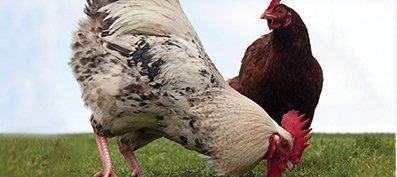A round-up of medical news and oddities from left field
The next pandemic: A case of when, not if
There was an event last year that probably should have received more attention in the media, and possibly should have been taken more seriously by world authorities in public health.
In June of last year, the Chinese Agriculture Ministry reported an outbreak of highly-pathogenic H5N1 bird flu on a farm in the north-west — the first case of such a strain reported since 2014. But the virus spread to neighbouring Bhutan and Nepal, as well as a prefecture in Tibet, where it killed 1,050 broiler chickens out of a flock of 1,615. It was the sixth case of highly pathogenic bird flu reported in China alone in 2018.
Most cases reported during 2018 in China were of the H7N9 variety, another highly pathogenic form, and it mutated to become more lethal and killed hundreds of people last year, despite a nationwide vaccination programme.
Towards the end of last year, delegates at the World Health Summit heard that most potential emerging epidemic threats are zoonotic and we are simply not prepared to even identify such a disease or its animal source. Think SARS or Ebola.
The terminology being used for the next epidemic, which is a question of ‘when’, not ‘if’, is ‘Disease X’. A good example of how this could take hold on the ground with stealth was provided by veterinary pathologist Ms Tracey McNamara, who put together a summit panel on Disease X during the World Health Summit. She spoke of an instance in 1999, when she was head pathologist at the Bronx Zoo in New York.
Ms McNamara noticed that crows were dropping dead with alarming regularity all over the zoo. Long story short, it turned out to be a novel disease and she showed sharp clinical acumen in suspecting that it might be linked to a number of human deaths in New York attributed to an unusual form of encephalitis. However, she said she struggled to obtain a proper diagnosis from public health departments because they wouldn’t process disease samples from zoo animals.
It was reported in Live Science that during a subsequent TED Talk, she said the gist of the response she got from the Centres for Disease Control was: “We don’t do flamingos.”
It turned out to be the West Nile virus — the first time it had surfaced in the Western hemisphere. “It was just sheer luck that it wasn’t ‘the one’,” said McNamara.
This, and other such examples, should be a lesson to anybody with even a passing interest in public health. We are all used to a lack of connectedness between different authorities with different remits in health, but this is one area that has somewhat slipped under the radar. A lack of co-ordination between the medical and animal health sectors may also be partly responsible for the epidemic of antibiotic resistance, as there seems to be scant oversight regarding how many and what types of antibiotics are being fed to animals that end up in our food chain.
A level of greater collaboration is required between public health authorities and the veterinary sector to create a more proactive attitude before a Disease X makes the transition to humans, as currently, the response to an outbreak can take several months.
This really should not be a complicated issue to address, partly because it is harder to identify and tackle a new disease when it is causing illness alone. Deaths are the events that generate the headlines.
Mc McNamara also makes the valid point the “we don’t have a definition of ‘preparedness’” and while one hopes that there are efforts going on behind the scenes, the fact is that we are — excuse the pun — sitting ducks for the next outbreak.
Giddy-up
A quick bit of nonsense as a palate-cleanser after the mildly apocalyptic offering above. I’m always grateful for any contributions to the email address at the bottom of the page.
But for now, put your thinking-caps on and consider the solution to this little conundrum:
You are on a horse, galloping at a constant speed. On your right side is a sharp drop off, and on your left side is an elephant travelling at the same speed as you.
Directly in front of you is another galloping horse, but your horse is unable to overtake it.
Behind you is a lion running at the same speed as both you and the horse in front of you.
Q: What must you do to safely get out of this highly dangerous situation?
A: Stop drinking and get off the merry-go-round.













Leave a Reply
You must be logged in to post a comment.